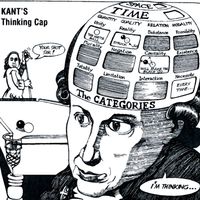What is Neurotheology to a Neuroscientist?
In 1431, 19-year old Joan of Arc was put on trial for various offenses, including heresy. At the proceedings, “she declared that at the age of thirteen she had a voice from God to help her and guide her. And the first time she was much afraid. And this voice came towards noon, in summer, in her father's garden.”
Fast forward about 600 years to the 1990s. That was when neuroscientist Andrew Newberg pioneered the neurological study of religious and spiritual experiences. Using brain imaging technology, Newberg sought to explain the neurophysiological mechanisms for religiosity and spirituality. More specifically, he wanted to understand the relationship between what many think of as the ineffable, or immaterial realm associated with religious faith and spirituality, and the empirical, or the various regions of the brain and their functions.
In his Neurotheology: How Science Can Enlighten Us About Spirituality, Newberg explores the myriad of links between neuroscience, religious phenomena, and spirituality. Neurotheology is the study of the complex interplay of the brain with the thoughts, emotions, and kinesis of religious and spiritual activity. More specifically, Newberg is interested in how these activities occur in the brain, and how religious and spiritual practices, “change the person, change their experiences, and change the way they believe.”
Technologies such as fMRI and positron emission tomography allow neuroscientists to watch functional changes in the brain when, for example, someone prays or meditates. Study participants’ brains are scanned when not engaged in a religious or spiritual activity, and then scanned again when they are. The frontal lobe is activated during these activities, which, according to Newberg, prime the brain for religious or mystical experience.
Since 2008, researcher Zoran Josipovic has used fMRI to study how Buddhist monks achieve “oneness,” the unification of the individual and the universe. More specifically, he has tracked how attention shifts between so-called extrinsic and intrinsic (or default) brain networks. When we focus on external tasks, such as picking a flower or looking for a street sign, our extrinsic network is active. When our attention is on ourselves — for example, when thinking about our emotional state — our brains are in default mode. The two networks are rarely simultaneously active, but Josipovic found the monks can maintain both types of attention while in a meditative state. This, he thinks, explains the experience of a harmonious oneness.
Newberg accounts for this sort of experience in terms of the parietal lobe ‘quieting down.’ Because our feeling of self is associated with the parietal lobe, intense religious or spiritual experience includes the feeling of merging or connecting with the universe. He also sees neurotheology as a useful tool in promoting the positive effects of these practices and experiences. More specifically, understanding the physiological mechanisms of ecstatic experiences can promote mental health.
The neuroscientist leaves untouched the question of a religious experience’s ultimate origin. After all, if religious and spiritual experience is of the ineffable, if it is transcendent, then by definition, the source of that experience is outside the scope of empirical investigation. What the neuroscientist can do, however, is explain the brain’s relationship to certain states and beliefs.
Sources: Brains of Buddhist monks scanned in meditation study, Neuroscience News, The Psychologist, Big Think, Mind Matters News








